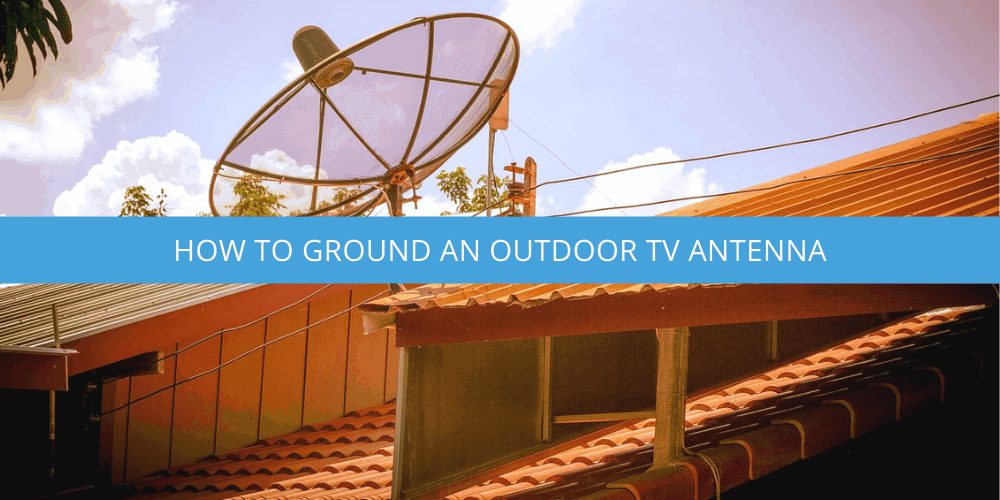When purchasing a TV antenna, few people know that it needs to be grounded. Even the newer ones have metal inside them. Since TV signals are essentially made of electricity, the antenna is engineered to capture that.
If you have not grounded your antenna, it will also attract lightning, significantly damaging your house. While the chance of that happening may be slim, it isn’t worth taking a chance. Some jurisdictions make this mandatory. Let’s see how we can ground an outdoor TV antenna, but before that, you may see guides here for the best outdoor antenna for rural areas.
Here Are Some Common Methods for Grounding an Outdoor Tv Antenna:
- Grounding rod: One common method for grounding an outdoor TV antenna is a grounding rod, also known as a ground rod or earth rod. This metal rod is driven into the ground and used as a connection point for grounding wires. To ground an outdoor TV antenna using a grounding rod, you need to connect a grounding wire from the antenna to the grounding rod using a grounding clamp.
- Building grounding system: If the building where the antenna is installed has a grounding system, such as a grounding rod or a grounding plate, you can connect the antenna to this system using a grounding wire. This will provide a safe and reliable grounding path for the antenna.
- Grounding wire: If a grounding rod or building grounding system is unavailable, you can use a grounding wire to provide a grounding path for the antenna. To do this, you will need to attach one end of the grounding wire to the antenna and the other end to a metal object that is securely grounded, such as a metal water pipe or a metal stake driven into the ground.
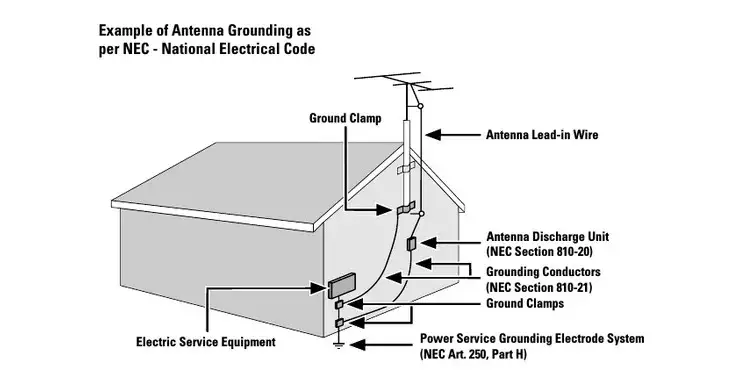
I will cover one particular method I think is the best and easiest below.
Materials Required
National Electric Code (NEC) Article 810 dictates the compliances on grounding procedures, and the usage of materials needed for the same are aptly demonstrated in the picture. (1)For the house’s safety, single-point grounding is advised so that all surges flow in one direction towards one point, to the ground.
It needs to be connected to a point near an electric service meter panel called the Power Service Grounding Electrode System.
The images show two wires merging into one at the Power Service Grounding Electrode System from the antenna:
- One is connected to the coaxial antenna cable.
- Another one is attached to the pole or mast on which the antenna is mounted. The meeting point is a metal rod buried underground to divert and control electrical surges.
1. House Ground Wire
Usually, it is available as a single wire connected from your electric service meter panel, going straight down into the ground. Easy to identify, it is quite a thick copper wire attached to the metal rod that will ultimately be buried. Ensure beforehand that it is not rusted, as the acidity from the soil can eat away at the metal. Note its location carefully.
2. Mast Clamp
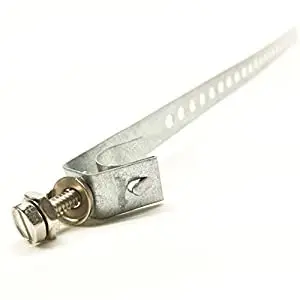
You can do away with either a ground strap or a pipe clamp. The device is needed for bonding a house wire to the antenna’s mast. It looks something like this: If the place where the wire is supposed to make contact with the mast is coated or painted, chip it off so that the wire is directly connected to the mount.
3. Grounding Wires – Quantity 2
Get two copper wires a little less thick than your house ground wire. An ideal thickness of at least #10 American Wire Gauge is recommended. These will be used to ground the antenna coaxial cable and mast. Some brands also offer wires with grounding qualities.
4. Coaxial Grounding Block
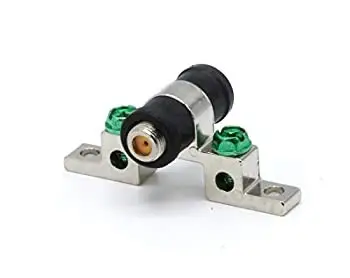
A coaxial grounding block is specifically used to ground the coaxial antenna cable. The same is depicted through the descriptive image by NEC. Majorly you can find two types of grounding blocks:Standard: Widely available in the market, it looks something like this: You can find this near the coaxial cable where it enters the home.
It helps dissipate interference and static without disturbing the signals. Coaxial Lightning Arrestor: If you live in a zone with many thunder warnings and experience lightning strikes fairly frequently, you will be better off with this one than purchasing the standard one. I
t is more sophisticatedly designed in the way that it is filled with a gas that instantly gets ionized by sudden electronic surges and directs the spike directly to the ground.
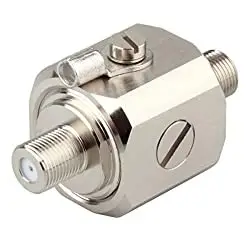
5. Sufficient Coaxial Cable
During the coax grounding block installation, you will need the two parts of the coaxial cable. Ensure that you have enough.
6. Ground Clamps
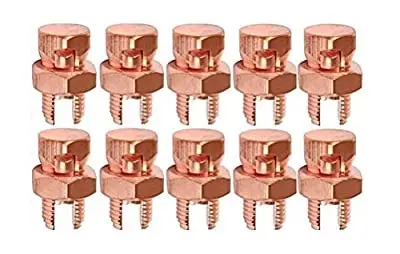
These ground clamps are needed when you attach the coax cable and the mast to the ground wire. It looks like the spike bolts here: However, please be careful that the house wire should not be detached to attach them as it could be unsafe. Try using an Intersystem Bonding Termination Bar (ITSB) instead.
Method for Grounding an Outdoor TV Antenna
Let’s get to the complicated task of grounding the TV antenna mast and coaxial cable:
- First, you need to identify where the coaxial will enter the house.
- Ideally, it should be a site where it remains sheltered from the rain but is on the exterior of your home.
- Now affix the block to the wall. Since usually, the blocks come with screws, it will easily allow you to install them directly.
- Now attach the antenna cable to the block. Ensure it is of proper length, and try a more weatherproof option.
- Attach another cable from the block to the TV set.
- Finally, attach the ground wire to the house ground wire and the block.
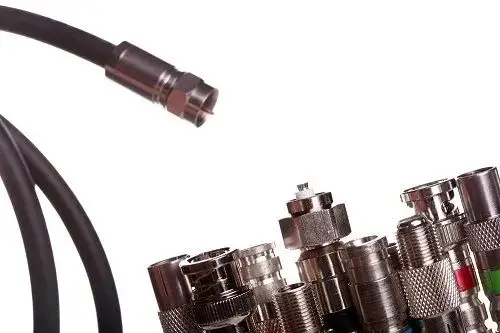
Now, on to grounding a TV antenna mast:
- Start by attaching a grounding wire to the antenna mast. If you have chosen a mast clamp, attach everything securely so that nothing slips off. If you are not using the clamp and are attaching the wire directly to the antenna mount, ensure that there is direct contact and that no paint or coating is coming in the way.
- Finally, start running the grounding wire from the TV antenna mast to the house ground wire.
Here, you can also check the learning guide on how to connect an outdoor antenna to multiple TV.
Final Words
Usually, people question whether indoor antennas need to be grounded, too, if they are not at risk of attracting lightning. While that is true, there are some benefits to grounding an indoor antenna.
Grounding helps get rid of interference and static. The connection and signals will be clearer. It also prevents you from getting a probable electric shock. Since the antenna is connected to a converter box and TV, it can have leakage at some point in time. All the excess current will now be directed to the ground. It should be remembered that the foremost advantage of grounding any antenna is safety. So, you should not take it lightly or do a shoddy job. It needs to be airtight.
If you cannot follow the instructions and are not confident about the task, please consider hiring an electrician or a professional.
References(1) NEC – https://searchdatacenter.techtarget.com/definition/National-Electrical-Code-NEC

